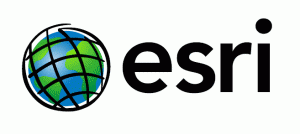Scientific data is collected from everywhere and used for everything. Research on rising sea levels, climate change, ocean science, forest preservation, energy assurance and more, rely on scientific data. But the power of scientific data can sometimes be overwhelming.
One way to maximize data findings is through spatial analytics, which is the answer to a question. Through spatial analytics we use maps to help us see possible patterns. Those patterns can help us describe what’s happening and improve our understanding to minimize subjectivity.
During yesterday’s online training, “Simple Ways to do More with Your Scientific Data,” scientific data experts walked us through tools they use every day to successfully integrate multi-dimensional scientific data with geographic information systems.
The experts included:
- Dawn Wright, Chief Scientist, Esri
- Brian Tisdale, Booz Allen Hamilton, NASA Atmospheric Science Data Center
- Suresh K.S. Vannan, Manager, Oak Ridge National Laboratory Distribution Active Archive Center
- Brett Rose, Solution Engineer, Esri
Here are a few tips from the experts on how to connect scientific data to GIS:
- Make your data findings easy to share. Esri and other GIS technology companies have resource centers, case studies and blogs that make their data findings readily available for users. Their data and models can be downloaded, processes are shown, and results are interpreted, and analysis and tools are outlined and determined by specific questions.
- Create story maps of your data. Walk the audience through a step-by-step process of what your data findings are telling the world. Creating a visual can help your users better comprehend the information they want to know.
- Better serve your users with ArcGIS. HDF4, HDF5 or NetCDF is where most of NASA’s data is stored, but it can be difficult to analyze with geospatial tools. ArcGIS has redefined the software NASA once used for geospatial tools to handle multi-dimensional products and several applications for its users to download information. Geospatial application end users can now store, serve and perform analysis on each variable, its time dimension and vertical dimension with ArcGIS.
- Create Mosaic Datasets. They allow you to aggregate spatial, time and vertical dimensions. Build a mosaic index so you can create models to make your data more visible for users.
- Utilize POWER SSE – GIS Web Application Enhancements. This gives your users high-quality viewing, data extraction and subsetting, simultaneous dataset visualization, temporal visualization, custom color ramps, pixel/attributed value identification, and selected location for utilizing data maps.
- Create an open data source initiative. Create a catalog of data made available through open source platforms. Social media, via Facebook and Twitter is a great way to extract geospatial data. Through this initiative you can guide your users to understand population dynamics, energy demand and utilization, traffic optimization and evacuation, land use, and urban planning.
Still want to do more with your scientific data? View the on-demand version of this training here.






Leave a Reply
You must be logged in to post a comment.